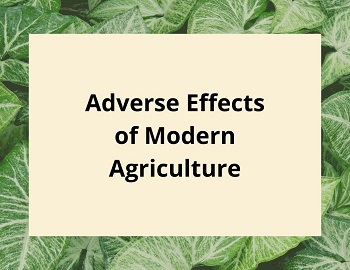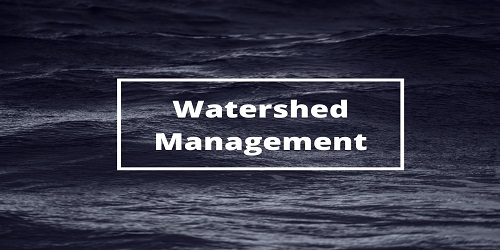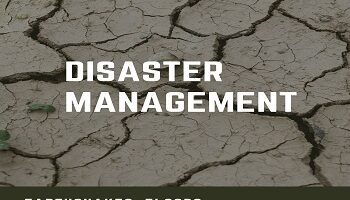Adverse Effects of Modern Agriculture:
It makes use of hybrid seeds of selected and single crop variety, high-tech equipments and lots of energy subsidies in the form of fertilizers, pesticides and irrigation water. Food production has increased tremendously, as evidenced by the “green revolution”. However, it also gave rise to several problematic off-shoots as discussed.
(1) Damage to Soil- Soil erosion from farmland threatens the productivity of agricultural fields and causes a number of problems elsewhere in the environment. Because it takes up to 300 years for 1 inch of agricultural topsoil to form, soil that is lost is essentially irreplaceable. The amount of erosion varies considerably from field to field, depending on soil type, slope of the field, drainage patterns and crop management practices.
Erosion affects productivity because it removes the surface soils, containing most of the organic matter, plant nutrients, and fine soil particles, which help to retain water and nutrients in the root zone where they are available to plants. The subsoils that remain tend to be less fertile, less absorbent, and less able to retain pesticides, fertilizers and other plant nutrients. Often the short-term costs of implementing erosion control measures far exceed the immediate economic benefit to the farmer, but such cost-benefit analysis fails to take into account the long-term losses of fertility and water-holding capacity of the soil. Up to a certain point, increased fertilization and irrigation will compensate for the loss of soil fertility. Long-term loss of farmland productivity and damage to the environment from eroded sediments, therefore, often are overlooked in the need for short-term economic gains. The decline in soil productivity can be mainly due to the following-
- Wind and water erosion of exposed topsoil.
- Soil compaction.
- Loss of soil organic matter.
- Loss of water holding capacity.
- Reduction in biological activity.
- Salinization of soils and irrigation water in irrigated farming areas.
- Desertification due to overgrazing.
Over the past 60 years, the negative effects of soil erosion on farm productivity have been masked by improved technology and increasing use of fertilizers and pesticides. Ironically, many of these measures are used to increase the short-term productivity of farms and are also causing excessive erosion, which threatens productivity in the long term.
(2) Contamination of Water- Farming is one potential source of water contamination. Surface runoff carries manure, fertilizers, and pesticides into streams, lakes, and reservoirs, in some cases causing unacceptable levels of bacteria, nutrients, or synthetic organic compounds. Similarly, water percolating downward through farm fields carries with it dissolved chemicals, which can include nitrate fertilizers and soluble pesticides. In sufficient quantities these can contaminate groundwater supplies. The nitrates get concentrated in the water and when their concentration exceeds 25 mg/L, they become the cause of a serious health hazard called “Blue Baby Syndrome” or “methaemoglobinaemia“. This disease affects infants to the maximum extent causing even death. Pesticides from every chemical class have been detected in groundwater and are commonly found in groundwater beneath agricultural areas. Many of the pesticides are non-biodegradable and keep on accumulating in the food chain, a process called biological magnification. Since human beings occupy a high trophic level in the food chain, they get the pesticides in a bio-magnified form which is very harmful. Eutrophication and “dead zones” due to nutrient runoff affect many rivers, lakes, and oceans. Reduced water quality reduces agricultural production, drinking water supplies, and fishery production.
(3) Water Logging- Over irrigation of croplands by farmers for good growth of their crop usually leads to waterlogging. Inadequate drainage causes excess water to accumulate underground and gradually form a continuous column with the water table. Under water-logged conditions, pore-spaces in the soil get fully drenched with water and the soil-air gets depleted. The water table rises while the roots of plants do not get adequate air for respiration. The mechanical strength of the soil declines, the crop plants get lodged and crop yield falls.
In Punjab and Haryana, extensive areas have become water-logged where adequate canal water supply or tube-well water encouraged the farmers to use it over-enthusiastically leading to water-logging problems.
Preventing excessive irrigation, sub-surface drainage technology and bio-drainage with trees like Eucalyptus are some of the remedial measures to prevent water-logging.
(4) Soil Salinity- Farmers generally have a tendency to over-irrigate their crops to ensure that they are receiving enough moisture, this practice, however, can increase salinity both in the soil and in water supplies. When crops are over irrigated, the surplus water evaporates and the salts that are dissolved in it are left behind increasing the salinity of the soil. Increased soil salinity can cause a decrease in plant productivity and interferes with water uptake by plants. Fruit crops are the most sensitive to soil salinity followed by vegetables and then field and forage crops.
The excess salts present in the soil can be removed by using good quality water to irrigate the soil. It gradually flushes out the salts. In another method, a network of perforated drainage pipes is laid underground (sub-surface drainage system) to remove the salts. The soil water containing salts seeps into the pipes slowly and is drained out of the fields. This method has been successfully used by the Central Soil Salinity Research Institute (CSSRI) in district Karnal (Haryana) and has converted barren lands into productive lands.









Comments (No)